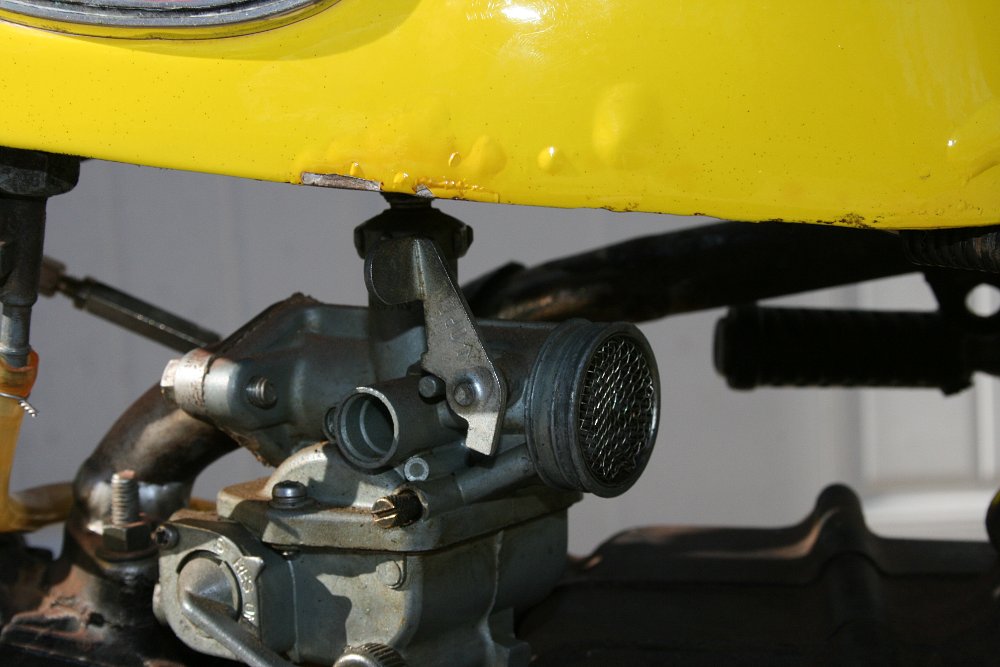The holidays are here, and you probably know a kid who is dreaming of a new two-wheeler — and I don’t mean one that is pedal-powered.
This year, after being surrounded by motorcycles for all of his 11 years, my son finally began to show interest in getting a bike of his own. For me, the dilemma was figuring out what would be a suitable first bike that would teach him the basic mechanics of riding without costing a small fortune.
The prices of kids’ dirt bikes have increased drastically since I got my first three-wheeler back in the 1980s, and after looking at some of the new offerings from Honda and Yamaha, I was coming down with a bad case of sticker shock. Sure, the new dirt bikes are much nicer than anything I rode when I was a kid, but dropping $2,000 (or more) on something that might be wrapped around a tree during the first 15 minutes of ownership didn’t seem like a good idea.
A starter bike should be one that can be dropped and at least mildly abused without making you cringe every time you see it being pushed back into the garage. Since new was definitely out of the question, it was on to Craig’s List to search for a used machine.

I scanned through tons of clapped-out dirt bikes before stumbling upon a Honda Mini Trail. This bike fits somewhere between a mini bike and a full-on dirt bike, making it worthy of further scrutiny. It looked pretty good in the pictures, was in my price range and most importantly, my son thought it was “cool.” So a couple days later I found myself in a stranger’s backyard riding around on a bright yellow miniature motorcycle and having a surprisingly good time.
The seller, a race junkie and mechanic, built the Mini Trail as a pit bike when he was part of a superbike team. He had swapped the motor with a larger SC70 and then added a big bore kit. This bumped the bike up from 50 cc to 88 cc, giving it quite a bit more pep, and it also upgraded the transmission from a three-speed automatic to a four-speed manual. Of course it was missing the lights, luggage rack, chain guard, etc, but it ran great and the lack of parts would give my son and I future projects to work on together.

Within half an hour, the owner was $500 richer and I was filling the back of my wife’s minivan with a used Mini Trail and a bunch of spare parts. I have to admit that I was just as excited as my son to get on the bike and ride around the yard, telling him all the while that this was just a test ride.


Well, that week turned into a few weeks when I found out that the petcock on the new tank interfered with the air filter. Luckily, the SC70 motor uses a carburetor that has a built-in petcock, so the petcock on the tank was redundant and could be removed. All I needed was a 90-degree elbow and a hose barb to reroute the fuel line coming from the tank and it would work fine.
“No problem,” I told my son “We’ll just go to Lowe’s and get some pipe fittings to fix it.” Of course no one makes a 90-degree elbow with M12x1.0 threads on one end and standard pipe threads on the other, so I had to special order a tap and modify a stock elbow to make it fit.


I let my son take the lead and he moved through swapping the gas tanks and installing the new air filter with ease. As I had hoped, he was really starting to get interested in working on the bike, and we moved right into performing a basic service.

Our experiences with the Mini Trail so far have been very positive. These 1970s-era dirt bikes are relatively cheap and easy to work on (even an 11-year-old can do it), making them great project bikes for young riders. By sticking with the basics, I was able to give my son more confidence in his mechanical abilities and keep him interested. A big job, like rebuilding the engine or transmission, would be a great project, but hours of tedious measurements and adjustments would surely make him lose interest.














